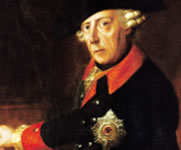Different Styles & Periods
- In the beginning was the castle
- A declaration of love to antiquity
- From Renaissance to Romanticism
- Baroque centre of culture and enlightenment
- Baroque magnificence
- Baroque gardens in the north
- Palatine baroque and Francophile elegance
- Late-baroque treasure troves
- Baroque to Biedermeier in Berlin and Brandenburg
- The Golden Age of Classicism
- Jewels of historicism
- Neo-Gothic romanticism
The Golden Age of Classicism
Classicism is the term for an art-historical style whose highest aspiration was the imitation of classical antiquity (primarily Greek antiquity and Greek temple architecture). In contrast with the preceding rococo period, classicism brought a return to linearity and the increased use of ancient classical forms. For example, Goethe, the great classicist, denounced the "squiggles and swirls" of rococo and called for "noble simplicity and serene grandeur". "Weimar Classicism" – the creative period of Goethe and Schiller, two writers who were also close friends – is characterised by profound concordance between literary and aesthetic ideas.
Weimar Palace & Ilm Park
Show on map »
Greiz Summer Palace
Show on map »
Fürstenlager Park, Bensheim
In 1790, the Landgraves and Grand Dukes of Hessen-Darmstadt had the "Fürstenlager" built as their summer residence. It was located in an idyllic little valley amid the Odenwald forest in Auerbach near Bensheim. Particularly impressive are the surrounding buildings that have survived almost completely intact. The park's 42 hectares contain a selection of exotic plants and trees, including the oldest sequoias in Germany.
Show on map »
Show on map »
Travel Planner
Select an option...
Location
- Weimar Palace & Ilm Park
- Greiz Summer Palace
- Fürstenlager Park, Bensheim






